The Rhinoceros Hornbill, scientifically known as *Buceros rhinoceros*, is one of the most remarkable birds belonging to the hornbill family (Bucerotidae). This species is easily recognized by its large, colorful beak and a distinctive casque on top of its head, which resembles the horn of a rhinoceros—hence the name “Rhinoceros.”
The Rhinoceros Hornbill is a large bird, with a body length ranging from 90 to 120 cm (35 to 47 inches) and a wingspan that can reach up to 150 cm (59 inches). Its plumage is primarily black, except for the white belly and tail. The most striking feature is its large beak and the bright yellow-orange casque, which makes it easily identifiable.
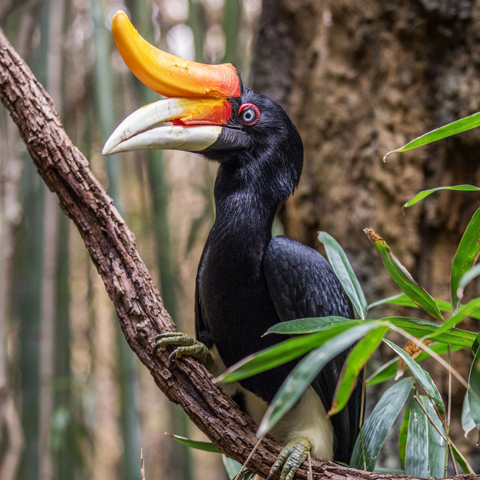
The Rhinoceros Hornbill is primarily found in Southeast Asia, including countries like Malaysia, Thailand, Indonesia, and Borneo. They typically inhabit tropical rainforests, where tall, old-growth trees provide ideal nesting and feeding opportunities.
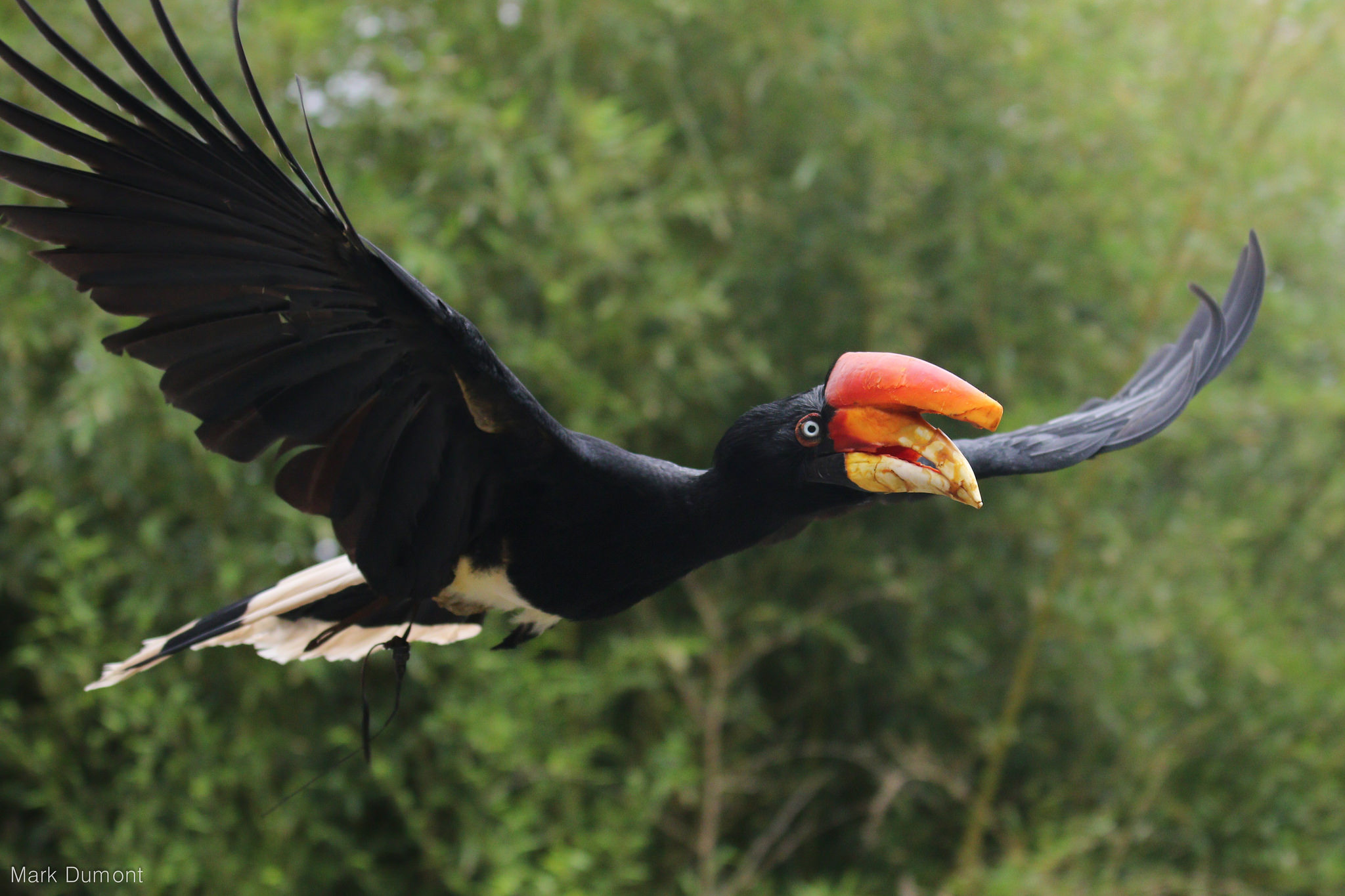
Rhinoceros Hornbills are monogamous, meaning they usually have one mate for life. Their breeding behavior is quite unique—the female lays her eggs in a tree cavity and then seals herself inside using mud, feces, and food debris, leaving only a small slit through which the male passes food. The chicks remain inside the nest until they are mature enough to fend for themselves.
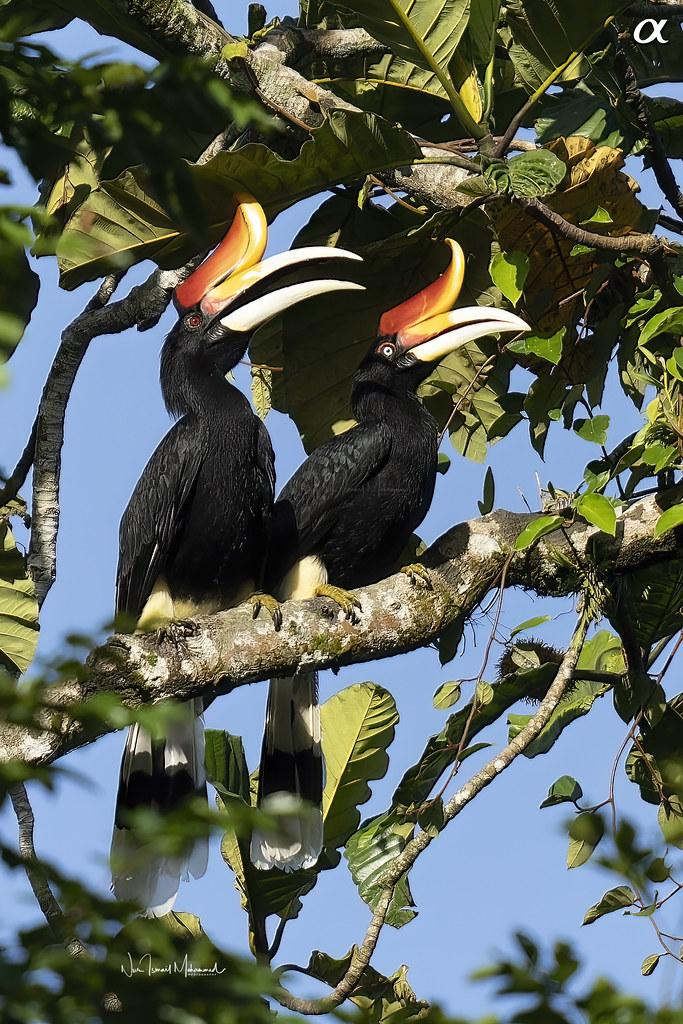
These hornbills have a diverse diet that primarily includes fruits, insects, small animals like lizards, and occasionally other birds. Figs are a favorite food, playing a crucial role in seed dispersal within the rainforest.
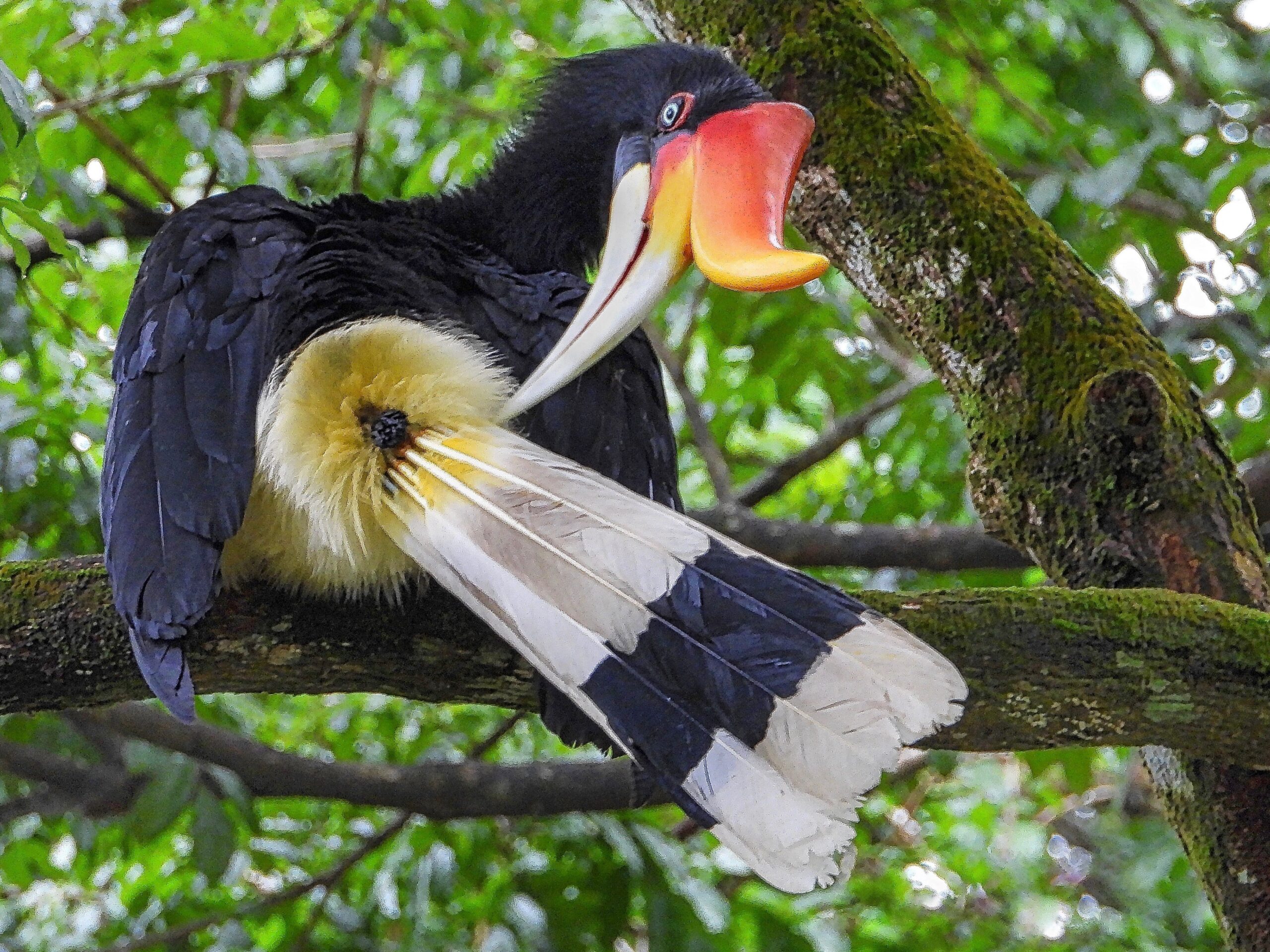
The Rhinoceros Hornbill faces significant threats due to habitat loss and hunting. In many regions, they are considered cultural and spiritual symbols, but they are also hunted for their beaks and casques, which are used as decorations. As a result, this species has been listed as one that needs protection, with hunting being banned in many countries.
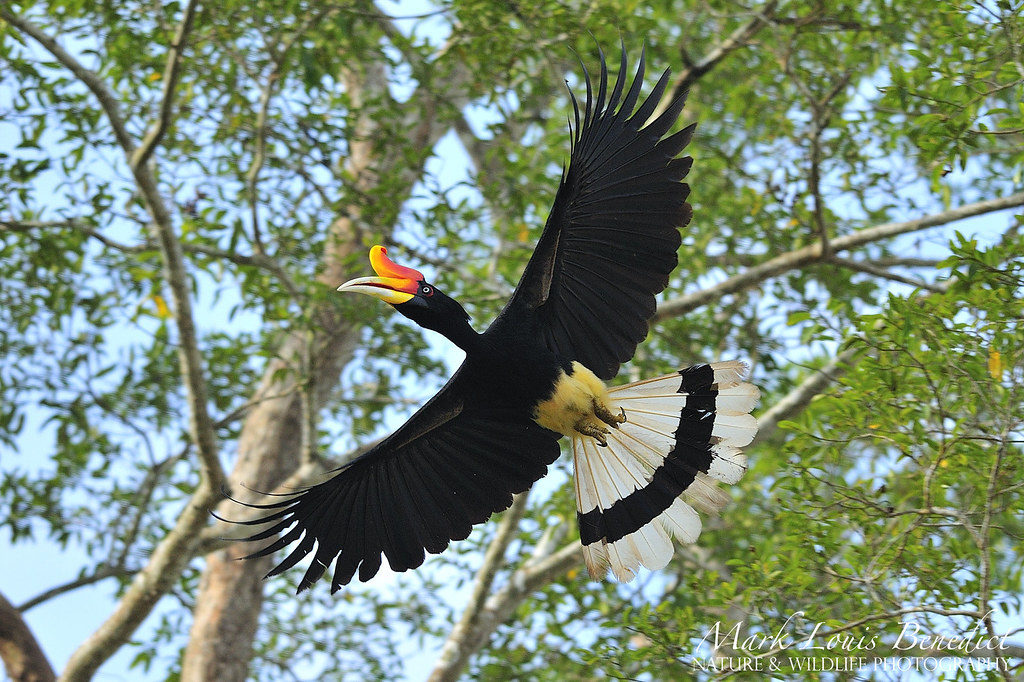
The Rhinoceros Hornbill is not only a vital part of the tropical rainforest ecosystem but also a symbol of resilience and perseverance in nature.





